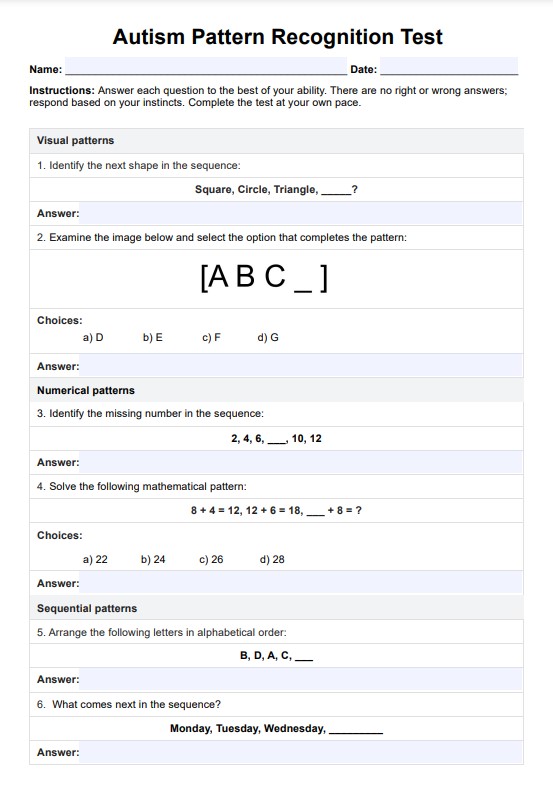While the Autism Pattern Recognition Test provides valuable insights into pattern recognition abilities, it is not a diagnostic tool for autism spectrum disorder. It should be used as part of a broader assessment conducted by a healthcare professional.

Autism pattern recognition test
Explore the Autism Pattern Recognition Test to understand pattern recognition in autism. Access a free PDF for your clinical practice.
Autism pattern recognition test Template
Commonly asked questions
Yes, the Autism Pattern Recognition Test is suitable for children, particularly those on the autism spectrum. It is designed to be accessible and engaging, making it an effective tool for assessing pattern recognition in younger individuals.
People with autism often possess excellent pattern-recognition skills. This is because their brains are wired differently, making them more sensitive to subtle details and patterns that might go unnoticed by neurotypical individuals. However, it's important to note that this is not always the case for all people with autism, and their pattern recognition abilities can vary greatly.
EHR and practice management software
Get started for free
*No credit card required
Free
$0/usd
Unlimited clients
Telehealth
1GB of storage
Client portal text
Automated billing and online payments











